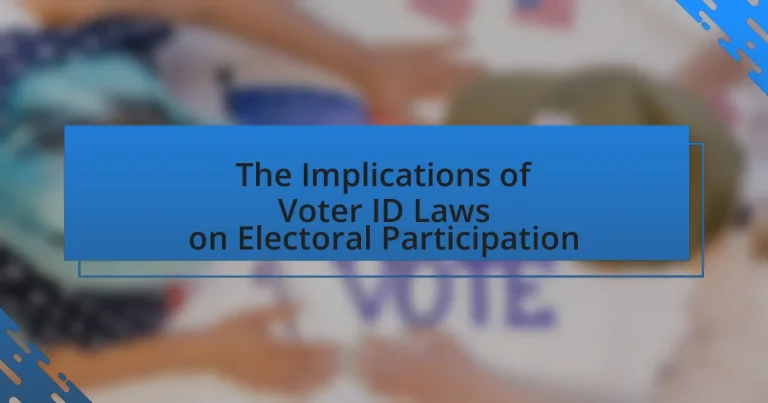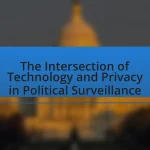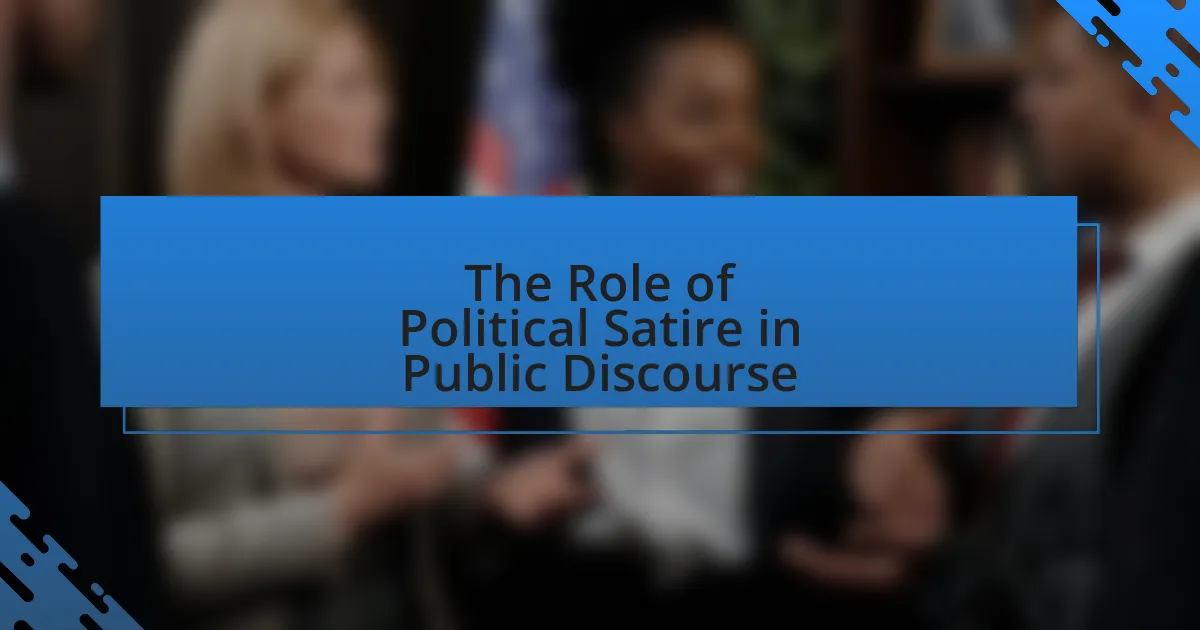Voter ID laws are regulations requiring individuals to present specific identification forms before voting, primarily aimed at preventing voter fraud and ensuring electoral integrity. The article examines the variation of these laws across states, highlighting the strict requirements in some states compared to more lenient or non-existent ID laws in others. It discusses the arguments for and against Voter ID laws, including their impact on voter turnout, particularly among marginalized groups, and the legal and political implications surrounding their implementation. Additionally, the article explores future trends, the role of technology in voter identification, and strategies to mitigate the negative effects of these laws on electoral participation.
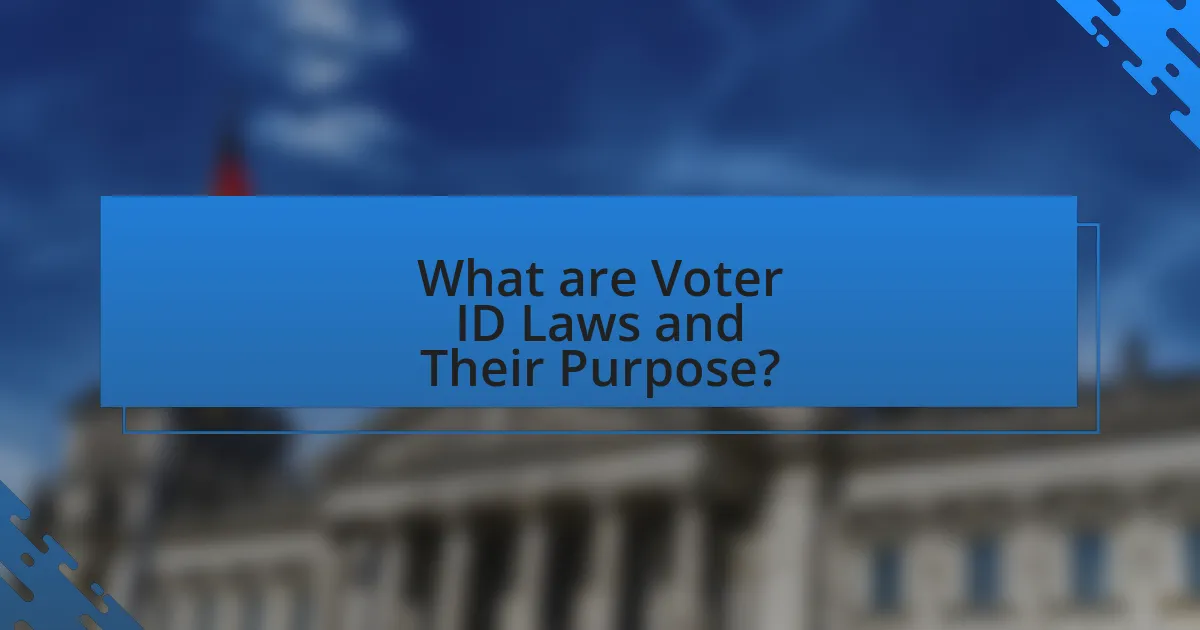
What are Voter ID Laws and Their Purpose?
Voter ID laws are regulations that require individuals to present specific forms of identification before they can vote in elections. The primary purpose of these laws is to prevent voter fraud and ensure the integrity of the electoral process. According to a 2018 report by the National Conference of State Legislatures, 35 states have enacted laws requiring voters to show identification, reflecting a significant trend aimed at enhancing security in voting.
How do Voter ID Laws vary across different states?
Voter ID laws vary significantly across states in the United States, with some states requiring strict photo identification, while others have more lenient requirements or do not require ID at all. For instance, states like Georgia and Indiana enforce strict photo ID laws, mandating that voters present government-issued identification to cast their ballots. Conversely, states such as California and New York do not require any form of identification for voting, allowing voters to cast their ballots without presenting ID. This variation impacts electoral participation, as studies indicate that strict ID laws can lead to lower voter turnout, particularly among minority and low-income populations, as evidenced by research from the Brennan Center for Justice, which highlights that states with strict ID laws saw a decrease in voter participation rates.
What are the most common types of voter identification required?
The most common types of voter identification required include government-issued photo IDs, such as driver’s licenses, state ID cards, and passports. These forms of identification are mandated in many states to verify a voter’s identity at polling places. According to the National Conference of State Legislatures, as of 2023, 35 states require some form of identification to vote, with photo ID requirements being prevalent in states like Georgia and Indiana. This trend reflects a broader movement to enhance election security while also raising concerns about accessibility and voter participation.
Why do some states implement stricter ID requirements than others?
Some states implement stricter ID requirements than others due to varying political ideologies, concerns about voter fraud, and the influence of interest groups. For instance, states with Republican leadership often advocate for stricter ID laws, citing the need to ensure election integrity, while Democratic-leaning states typically emphasize accessibility and voter participation. Research from the Brennan Center for Justice indicates that states with strict ID laws have seen a decrease in voter turnout, particularly among minority and low-income populations, highlighting the impact of these laws on electoral participation.
What arguments are made in favor of Voter ID Laws?
Arguments in favor of Voter ID Laws include the enhancement of election security and the prevention of voter fraud. Proponents assert that requiring identification helps ensure that only eligible voters can cast ballots, thereby maintaining the integrity of the electoral process. For instance, a study by the National Conference of State Legislatures indicates that states with Voter ID laws report lower instances of voter impersonation, which is a form of fraud. Additionally, supporters argue that these laws increase public confidence in elections, as citizens may feel more secure knowing that measures are in place to verify voter identity.
How do proponents believe Voter ID Laws enhance electoral integrity?
Proponents believe Voter ID Laws enhance electoral integrity by ensuring that only eligible voters can cast ballots, thereby reducing the risk of voter impersonation and fraud. They argue that requiring identification verifies a voter’s identity and eligibility, which can lead to increased public confidence in the electoral process. For instance, a study by the National Conference of State Legislatures indicates that states with strict voter ID laws report fewer instances of alleged voter fraud, suggesting that these laws may deter fraudulent activities.
What evidence is presented to support the need for Voter ID Laws?
Evidence supporting the need for Voter ID Laws includes studies indicating that voter impersonation, while rare, does occur and can undermine public confidence in electoral integrity. For instance, a 2014 study by the National Research Council found that 0.0003% of votes cast were fraudulent, yet proponents argue that even minimal instances of fraud necessitate measures to ensure voter identification. Additionally, surveys show that a significant portion of the public believes that requiring identification can enhance the security of elections, with a 2018 Gallup poll revealing that 70% of Americans support Voter ID laws. These statistics illustrate a perceived need for such laws to bolster trust in the electoral process.
What criticisms exist regarding Voter ID Laws?
Criticisms regarding Voter ID Laws primarily focus on their potential to disenfranchise voters, particularly among marginalized groups. Studies indicate that these laws disproportionately affect minorities, the elderly, and low-income individuals who may lack the required identification. For instance, a 2014 report by the U.S. Government Accountability Office found that states with strict voter ID laws saw a decline in voter turnout, especially among African American and Hispanic voters. Additionally, critics argue that the incidence of voter impersonation, which these laws aim to prevent, is exceedingly rare, with a 2017 study by the Brennan Center for Justice revealing only 31 credible instances of impersonation fraud out of over a billion votes cast in the U.S. from 2000 to 2014. These points underscore the contention that Voter ID Laws may create more barriers than they resolve, ultimately undermining electoral participation.
How do critics argue that Voter ID Laws suppress voter turnout?
Critics argue that Voter ID Laws suppress voter turnout by creating barriers that disproportionately affect certain demographics, particularly minorities, the elderly, and low-income individuals. These laws often require specific forms of identification that not all eligible voters possess, leading to confusion and disenfranchisement. For instance, a study by the Brennan Center for Justice found that approximately 11% of eligible voters do not have government-issued photo ID, with higher rates among African American and Latino voters. This lack of access to required identification can result in lower participation rates, as individuals may feel discouraged from voting if they believe they cannot meet the ID requirements.
What demographic groups are most affected by Voter ID Laws?
Voter ID laws most significantly affect minority groups, low-income individuals, and the elderly. Research indicates that these demographic groups are less likely to possess the required forms of identification, which can lead to disenfranchisement. For instance, a study by the Brennan Center for Justice found that approximately 25% of African American voters and 20% of Latino voters do not have government-issued photo IDs, compared to only 8% of white voters. Additionally, low-income individuals often face barriers in obtaining IDs due to costs and transportation issues, while elderly voters may have difficulty accessing ID renewal services. These disparities highlight the disproportionate impact of Voter ID laws on specific demographic groups, ultimately affecting their electoral participation.
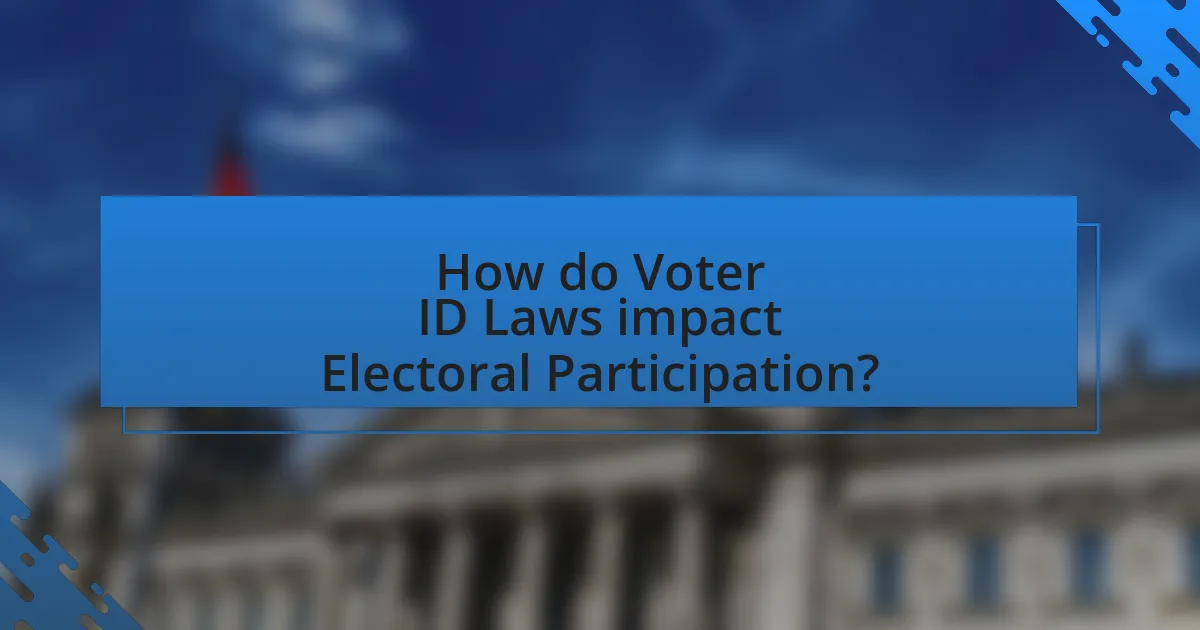
How do Voter ID Laws impact Electoral Participation?
Voter ID laws generally decrease electoral participation, particularly among marginalized groups. Studies indicate that states with strict voter ID requirements experience lower turnout rates, especially among minorities, the elderly, and low-income individuals. For instance, a 2014 study by the Government Accountability Office found that voter ID laws in Kansas and Indiana led to a 2-3% decrease in turnout, disproportionately affecting these demographics. This evidence suggests that while voter ID laws aim to enhance election security, they can inadvertently create barriers that hinder participation in the electoral process.
What evidence exists on voter turnout before and after implementing Voter ID Laws?
Evidence indicates that voter turnout often decreases after the implementation of Voter ID Laws. Studies, such as those conducted by the National Bureau of Economic Research, show that states with strict voter ID requirements experienced a reduction in turnout by approximately 2-3 percentage points, particularly among minority and low-income voters. Additionally, a report by the Brennan Center for Justice found that voter ID laws disproportionately affect demographics that traditionally have lower access to identification, leading to significant declines in participation rates in subsequent elections.
How do Voter ID Laws influence the participation of minority voters?
Voter ID laws negatively influence the participation of minority voters by creating barriers that disproportionately affect these groups. Research indicates that minority populations, including African Americans and Hispanics, are less likely to possess the required forms of identification compared to white voters. For instance, a study by the Brennan Center for Justice found that 25% of African American voters and 16% of Hispanic voters do not have government-issued photo IDs, compared to only 8% of white voters. This discrepancy leads to lower turnout rates among minorities, as the additional requirements can discourage or prevent them from voting.
What role does socioeconomic status play in the effects of Voter ID Laws?
Socioeconomic status significantly influences the effects of Voter ID laws by impacting individuals’ access to the required identification. Lower-income individuals often face barriers such as lack of transportation, financial constraints, and limited access to information about obtaining IDs, which can hinder their ability to vote. Studies, including one by the Brennan Center for Justice, indicate that states with strict Voter ID laws disproportionately affect low-income and minority voters, leading to decreased electoral participation among these groups. This correlation highlights how socioeconomic factors can exacerbate the challenges posed by Voter ID laws, ultimately affecting voter turnout and representation in the electoral process.
How do Voter ID Laws affect voter behavior and perceptions?
Voter ID laws significantly impact voter behavior and perceptions by creating barriers to participation and influencing public trust in the electoral process. Research indicates that stringent voter ID requirements can lead to decreased voter turnout, particularly among marginalized groups, as evidenced by a study from the Brennan Center for Justice, which found that states with strict ID laws saw a 2-3% drop in turnout among eligible voters. Additionally, these laws can foster perceptions of voter fraud, despite evidence showing that such fraud is exceedingly rare, thereby undermining confidence in election integrity. This combination of reduced participation and altered perceptions highlights the complex implications of voter ID laws on electoral engagement.
What psychological effects do Voter ID Laws have on potential voters?
Voter ID laws can create feelings of anxiety and disenfranchisement among potential voters. Research indicates that these laws may lead to lower voter turnout, particularly among marginalized groups who may feel intimidated by the requirement to present identification. A study by the Brennan Center for Justice found that states with strict voter ID laws experienced a decrease in participation rates, with estimates suggesting that up to 11% of eligible voters could be deterred from voting due to ID requirements. This psychological impact stems from the perception that the voting process is more complicated and less accessible, which can diminish individuals’ motivation to engage in electoral participation.
How do Voter ID Laws shape public trust in the electoral process?
Voter ID laws can significantly shape public trust in the electoral process by creating perceptions of security and integrity. When voters believe that these laws prevent fraud, they may feel more confident in the legitimacy of election outcomes. For instance, a study by the National Bureau of Economic Research found that states with strict voter ID laws reported higher levels of public trust in elections compared to those without such laws. However, these laws can also lead to skepticism among certain demographics, particularly if they perceive the requirements as discriminatory or burdensome. Research from the Brennan Center for Justice indicates that voter ID laws disproportionately affect minority and low-income voters, potentially undermining their trust in the electoral system. Thus, while voter ID laws can enhance trust for some, they may simultaneously erode it for others, highlighting a complex relationship between these laws and public confidence in elections.
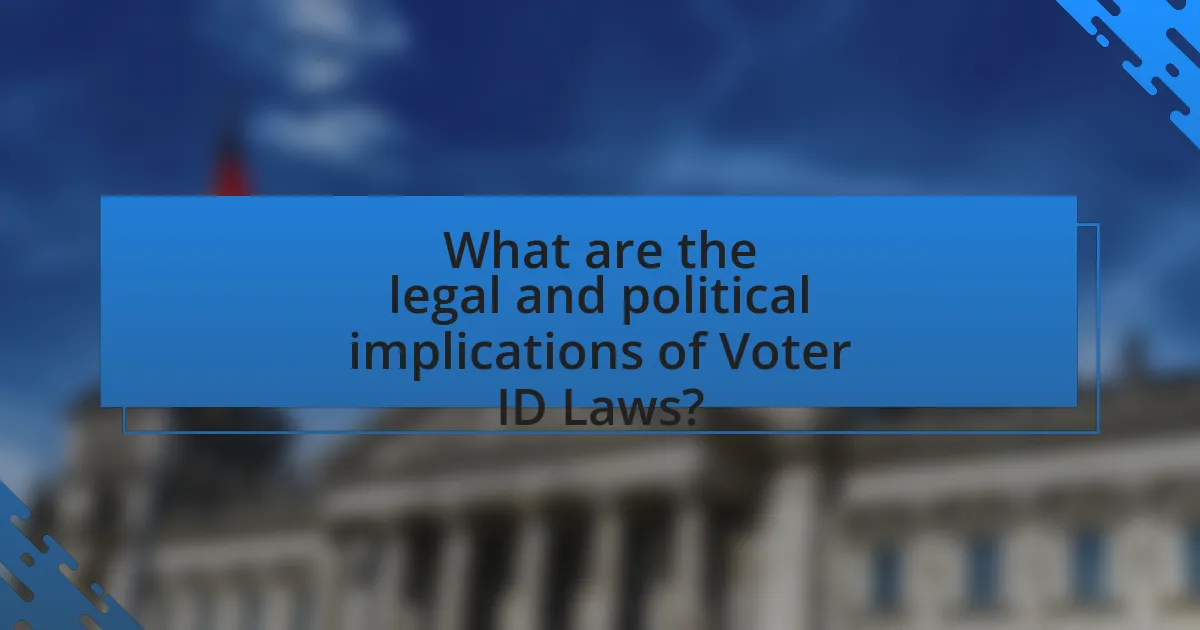
What are the legal and political implications of Voter ID Laws?
Voter ID laws have significant legal and political implications, primarily affecting access to the electoral process and the integrity of elections. Legally, these laws can lead to challenges in courts regarding their constitutionality, as seen in cases like Shelby County v. Holder, where the Supreme Court ruled on the Voting Rights Act’s provisions. Politically, Voter ID laws often become contentious, with proponents arguing they prevent fraud, while opponents claim they disproportionately disenfranchise minority and low-income voters. Studies, such as those conducted by the Brennan Center for Justice, indicate that strict ID requirements can reduce voter turnout by as much as 2-3%, highlighting the political ramifications of these laws on electoral participation.
How have courts responded to challenges against Voter ID Laws?
Courts have generally upheld Voter ID laws, ruling that they do not violate constitutional rights. For instance, the U.S. Supreme Court upheld Indiana’s Voter ID law in 2008, stating that the law’s requirements were not overly burdensome and served a legitimate state interest in preventing voter fraud. Additionally, various state courts have dismissed challenges on grounds that the laws do not disproportionately disenfranchise voters, citing evidence that the laws are implemented fairly and that states provide alternatives for those without ID. These rulings reflect a judicial trend favoring the legitimacy of Voter ID laws while balancing state interests in election integrity.
What are the key legal precedents regarding voter identification?
Key legal precedents regarding voter identification include the Supreme Court case Crawford v. Marion County Election Board (2008), which upheld Indiana’s voter ID law, ruling that it did not impose an unconstitutional burden on voters. This decision established that states have the authority to implement voter ID laws to prevent fraud, as long as they do not excessively hinder the right to vote. Another significant case is Shelby County v. Holder (2013), which invalidated parts of the Voting Rights Act, impacting how states implement voter ID laws and leading to an increase in such laws in several states. These precedents illustrate the legal framework surrounding voter identification and its implications for electoral participation.
How do political parties leverage Voter ID Laws in their platforms?
Political parties leverage Voter ID Laws in their platforms primarily to mobilize their base and influence voter turnout. For instance, Republican parties often advocate for stricter Voter ID requirements, arguing that these laws prevent voter fraud and enhance election integrity, which resonates with their supporters who prioritize security in the electoral process. Conversely, Democratic parties typically oppose such laws, claiming they disproportionately disenfranchise minority and low-income voters, thus framing their platform around inclusivity and access to voting. This strategic positioning allows parties to galvanize their constituents by aligning voter ID laws with broader ideological narratives, such as fairness and representation in the electoral system.
What future trends can be anticipated regarding Voter ID Laws?
Future trends regarding Voter ID Laws indicate a potential increase in both the implementation of stricter ID requirements and ongoing legal challenges to these laws. As states continue to prioritize election security, many are likely to adopt more stringent voter identification measures, reflecting a trend observed in recent years where over 30 states have enacted laws requiring voters to present identification at the polls. Concurrently, advocacy groups and civil rights organizations are expected to challenge these laws in courts, arguing that they disproportionately affect minority and low-income voters, as evidenced by studies showing that voter ID laws can lead to decreased electoral participation among these demographics. This dual trend of stricter laws and legal opposition will shape the future landscape of voter ID regulations and their impact on electoral participation.
How might changes in legislation affect voter participation in the coming years?
Changes in legislation, particularly regarding voter ID laws, may significantly impact voter participation in the coming years by either facilitating or hindering access to the electoral process. For instance, stricter voter ID requirements can lead to decreased participation among marginalized groups, as evidenced by a study from the Brennan Center for Justice, which found that states with strict ID laws saw a drop in turnout by as much as 2-3% among eligible voters. Conversely, legislation aimed at expanding access, such as same-day registration or automatic voter registration, has been shown to increase participation rates, as demonstrated in states like California, where voter registration reforms led to a 20% increase in turnout in the 2018 midterm elections. Thus, the nature of legislative changes will play a crucial role in shaping voter engagement in future elections.
What role will technology play in the evolution of voter identification?
Technology will significantly enhance the evolution of voter identification by introducing more secure, efficient, and accessible methods for verifying voter identity. Innovations such as biometric identification, blockchain technology, and mobile applications can streamline the voter registration process and reduce the risk of fraud. For instance, biometric systems, which utilize fingerprints or facial recognition, have been successfully implemented in various countries, demonstrating their effectiveness in ensuring accurate voter identification. Additionally, the use of blockchain can provide a transparent and tamper-proof record of voter identities, further bolstering the integrity of elections. These technological advancements not only improve security but also aim to increase voter participation by making the identification process more user-friendly and less cumbersome.
What strategies can be employed to mitigate the negative impacts of Voter ID Laws?
To mitigate the negative impacts of Voter ID Laws, strategies such as implementing same-day registration, providing free and accessible identification, and enhancing public education campaigns can be employed. Same-day registration allows voters to register and vote on the same day, which can increase participation among those who may lack proper ID. Providing free identification ensures that financial barriers do not prevent eligible voters from accessing the necessary credentials to vote. Public education campaigns can inform citizens about ID requirements and the voting process, thereby reducing confusion and increasing turnout. Research indicates that states with more accessible voting laws, including same-day registration and free ID provisions, tend to have higher voter participation rates, demonstrating the effectiveness of these strategies.
How can advocacy groups support affected voters in navigating ID requirements?
Advocacy groups can support affected voters in navigating ID requirements by providing resources and assistance to help them understand and comply with these laws. These organizations often offer educational materials that clarify the specific ID requirements in their state, including what forms of identification are acceptable and how to obtain them. For instance, the Brennan Center for Justice has documented that states with strict voter ID laws can create barriers for marginalized communities, and advocacy groups can counteract this by organizing workshops and outreach programs that inform voters about their rights and the necessary steps to secure valid identification. Additionally, these groups may assist in the application process for obtaining IDs, ensuring that voters have access to the necessary documentation and support to participate in elections.
What best practices can be implemented to ensure equitable access to voting?
To ensure equitable access to voting, implementing automatic voter registration is essential. This practice simplifies the registration process, making it more accessible to all eligible voters, particularly marginalized groups. Research indicates that states with automatic voter registration have seen increased voter participation rates; for example, Oregon reported a 10% increase in voter turnout after adopting this system. Additionally, providing multiple voting methods, such as mail-in ballots and early voting, further enhances accessibility, accommodating individuals with varying needs and schedules. Studies show that states offering these options experience higher voter engagement, demonstrating the effectiveness of these best practices in promoting equitable access to voting.
